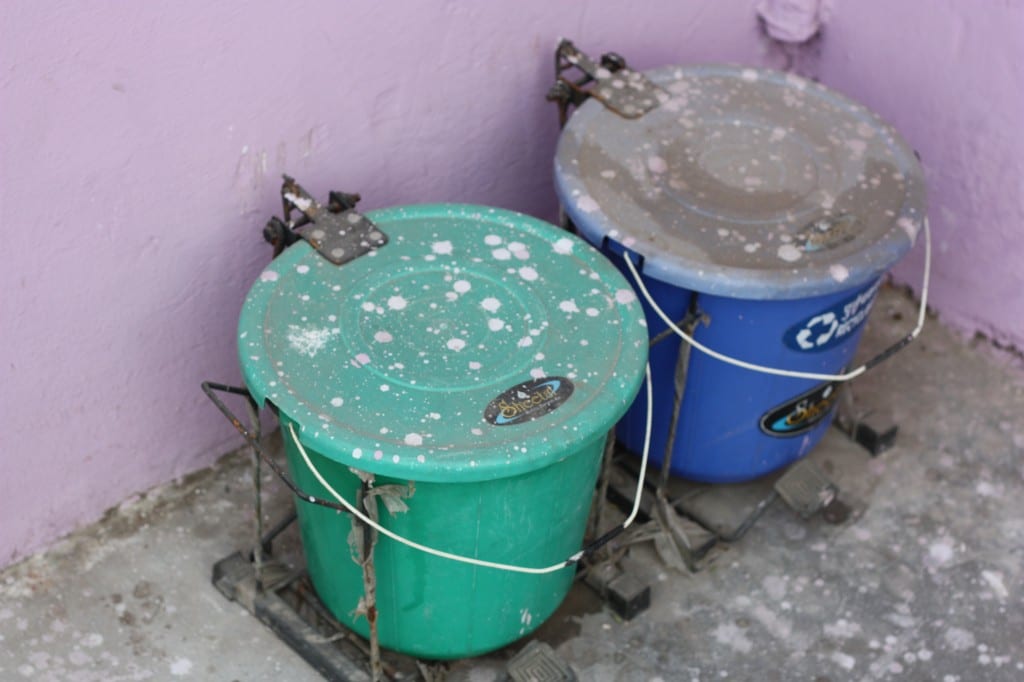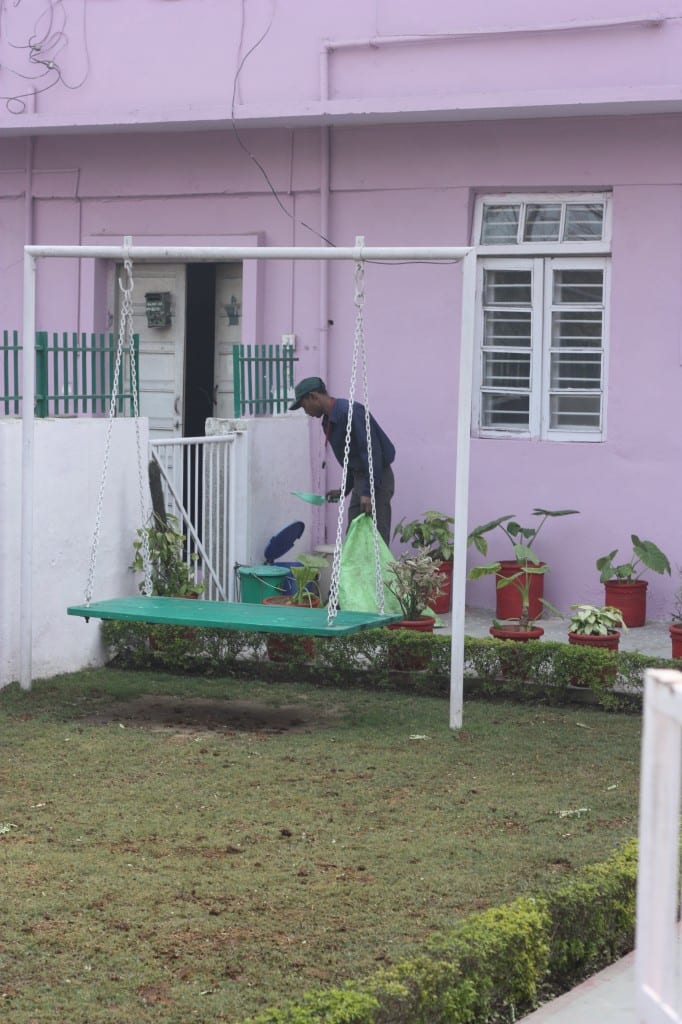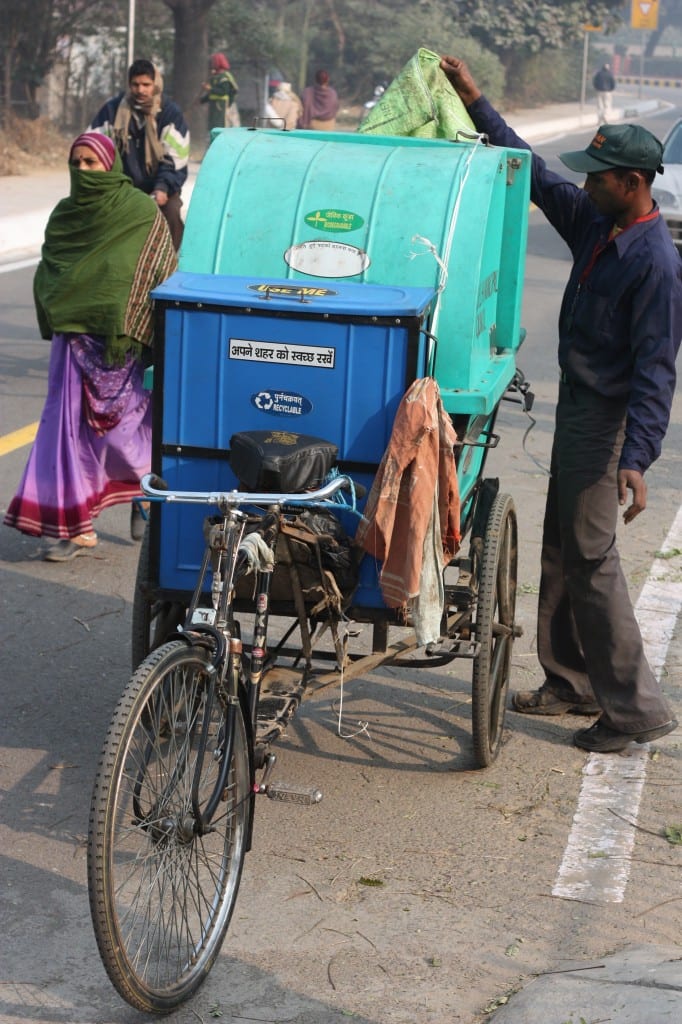My second field trip last week took me to a colony in Delhi near Dilli Haat. Dilli Haat is a daily market and food plaza, where sellers from all around India sell region specific goods such as cloths, handcrafted items and arts. It used to be a traditional place of trade but has now, partly due to governmental subsidies, become a well-known tourist attraction. If ever you come to Delhi, come and have a look and taste the food 😉
Around the corner from this place I was introduced to Chintan’s Scavengers to Managers programme. This programme aims at giving waste pickers the tools to become official entrepreneurs who are recognised by society and the local government. They get a regular wage, and are formally allowed to make use of predestined public spaces to segregate the collected waste.
I would describe the area near Dilli Haat as a middle class residential colony. When we arrived we met with a rag picker and we joined him for a while on one of his routes. The rag pickers are officially employed by Chintan (for about 1000 rupees a month) and have to work every morning. They need to serve an allocated route. They are given a tricycle which they use to collect the waste from the households on their routes. Furthermore they have a uniform and can clearly be recognised as official workers.
Having collected the waste from every house on their route, they take it to a specific public space where they can segregate the collected materials. The only important rule is that they must separate organic materials from dry materials and put them in two separate containers which are emptied regularly by the municipalities. Apart from that, they are allowed to keep any materials they collect. These materials are sold to dealers and that’s how the waste pickers make most of their money. As the job takes place in the morning they have the opportunity to do additional work in the afternoon. For example, the waste picker we shadowed also sweeps the yards of some of the houses from which he collects the wastes. This gives him an additional income.
The project is recognised and supported by the municipal authorities and the results are striking. There are no costs for the municipalities (their costs are reduced as they only need to empty the containers and need no longer serve every house in the area) and the residents can (but don’t have to) make donations and get a daily and reliable service in return. The waste picker’s income has increased considerably, the streets are much cleaner (waste no longer gets dumped on the street) and residents can rely on a daily service. In case of any rag picker not doing his/her job properly, a hot line can be called and the picker can be reported.
Thus, it can really be said that this project is highly sustainable. It creates a win-win situation for the local government, the residents and the waste pickers. Streets in the areas served by the Scavengers to Managers project are clean and the residents clearly see the improvements and advantages this system has brought about. What’s now needed is to show residents in other areas understand those advantages so that they can overcome their unjustified initial prejudgments.



